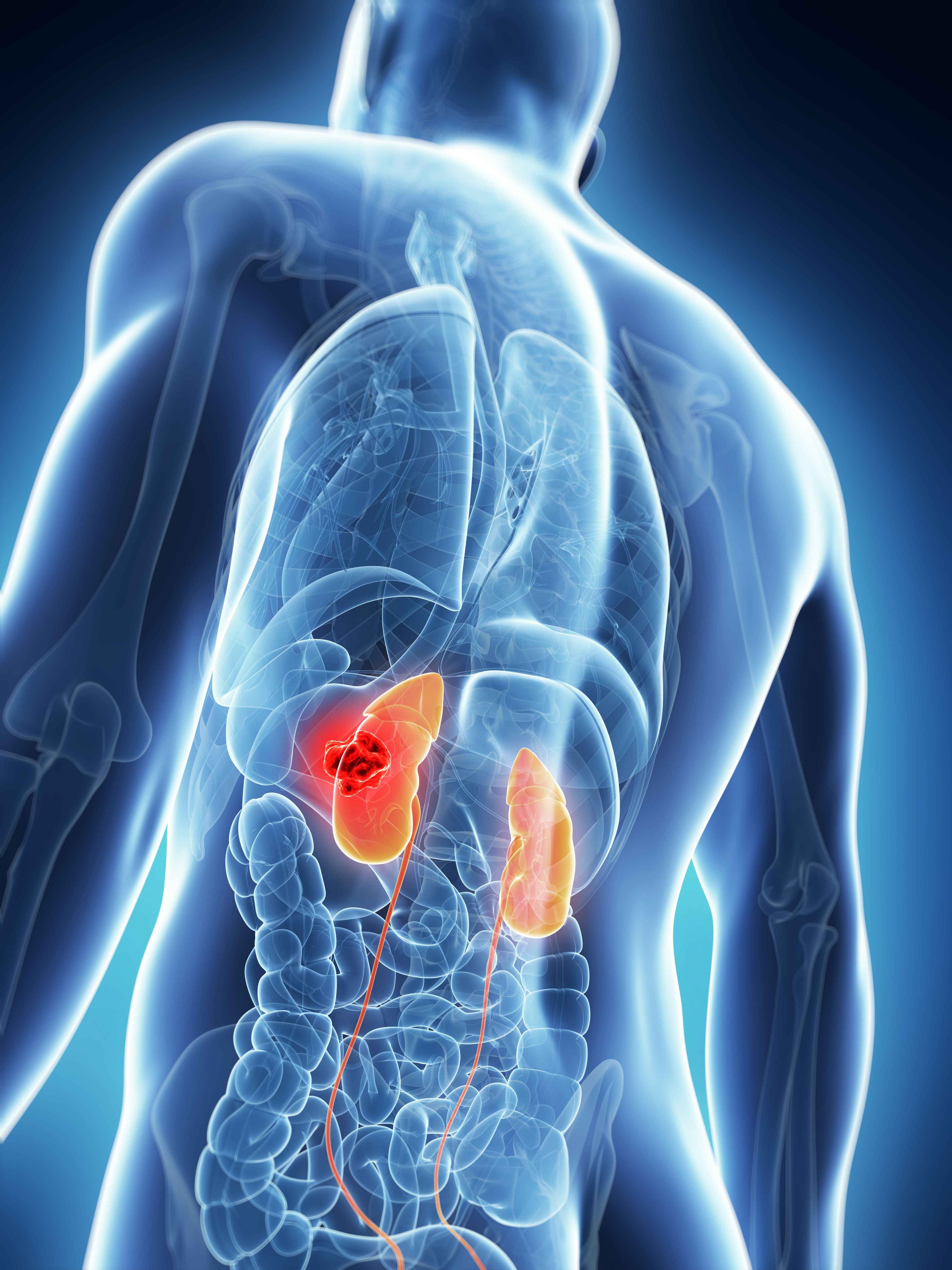Belzutifan Receives European Approval in Localized/Advanced RCC Indications
LITESPARK-004 and LITESPARK-005 trial results support the approval of belzutifan in patients with associated localized or advanced clear cell RCC.
LITESPARK-004 and LITESPARK-005 trial results support the approval of belzutifan in patients with associated localized or advanced clear cell RCC.

First, belzutifan was approved for adult patients with von Hippel-Lindau (VHL) disease who require therapy for associated, localized RCC; central nervous system (CNS) hemangioblastomas; or pancreatic neuroendocrine tumors (pNET) for whom localized treatments are unsuitable. Additionally, it received approval for adult patients with advanced clear cell RCC (ccRCC) that progressed following 2 or more lines of therapy including PD-1 or PD-L1 inhibition and at least 2 VEGF-targeted therapies.
Support for the EU approval in patients with VHL disease came from the phase 2 LITESPARK-004 trial (NCT03401788). For those with advanced RCC, supporting data came from the phase 3 LITESPARK-005 trial (NCT04195750).
“The approval of [belzutifan] in the EU introduces the first and only systemic treatment option for adult patients with certain VHL disease-associated tumors for whom localized procedures are unsuitable, and offers a new option for adult patients with advanced [ccRCC] that progressed following a PD-1 or PD-L1 inhibitor and at least 2 VEGF-targeted therapies,” Marjorie Green, MD, senior vice president and head of Oncology and Global Clinical Development at Merck Research Laboratories, said in the news release on the approval.1 “This is an important moment, and we are pleased that [belzutifan], a first-in-class HIF-2α inhibitor, can now potentially help these patients in need.”
Phase 2 LITESPARK-004 Trial
Data from the phase 2 LITESPARK-004 trial revealed that in patients with VHL disease who require therapy for associated RCC (n = 61), the overall response rate (ORR) was 49% (95% CI, 36%-62%), all of which were partial responses (PR). Additionally, the median duration of response (DOR) was not reached (NR), with responses ranging from 2.8+ to 22+ months. Furthermore, of treatment responders, 56% remained in response for a minimum of 12 months.
In patients with VHL disease-associated CNS hemangioblastomas, (n = 24), treatment with belzutifan elicited an ORR of 63% (95% CI, 41%-81%), with 1 complete response (CR; 4%) and a PR rate of 58%. Median DOR was NR, and ongoing responses ranged from 3.7+ months to 22+ months. Additionally, among responders in this subgroup, 73% remained in response for a minimum of 12 months.
Furthermore, in patients with VHL disease-associated pNET (n = 12), belzutifan exhibited an ORR of 83% (95% CI, 52%-98%), with 17% of patients attaining a CR and 67% attaining a PR. Median DOR was NR, and ongoing responses ranged from 11+ to 19+ months. Additionally, among responders, the 12-month response rate was 50%.
Investigators in the phase 2 LITESPARK-004 trial enrolled adult patients with VHL disease and at least 1 measurable RCC tumor to receive 120 mg of oral belzutifan daily across three 40 mg tablets.2 Patients continued treatment until disease progression or unacceptable toxicity.
The primary end point of the trial was ORR. Secondary end points included DOR, time to response (TTR), progression-free survival (PFS), and safety.
Phase 3 LITESPARK-005 Trial
Data from the phase 3 LITESPARK-005 trial revealed that belzutifan reduced the risk of disease progression or death by 25% vs everolimus (Afinitor) in adult patients with advanced ccRCC (HR, 0.75; 95% CI, 0.63-0.90; P = .0008). Additionally, the median PFS was 5.6 months (95% CI, 3.9-7.0) vs 5.6 months (95% CI, 4.8-5.8) in the respective arms. The ORR was 22% (95% CI, 18%-27%) with belzutifan and 4% with everolimus (95% CI, 2%-6%), with CR rates of 3% and 0%, respectively, and PR rates of 19% and 4%.
Investigators in the phase 3 LITESPARK-005 trial enrolled adult patients with advanced RCC that progressed following prior PD-1–, PD-L1– or VEGF-targeted therapies to receive either 120 mg of oral belzutifan once daily or 10 mg of oral everolimus once daily.3
The primary end point was PFS per RECIST v1.1 criteria as assessed by blinded independent central review and OS. Secondary end points included ORR, DOR, and safety.
References
- WELIREG® (belzutifan) receives first European Commission approval for two indications. News release. Merck. February 18, 2025. Accessed February 18, 2025. https://tinyurl.com/mw6572uv
- A phase 2 study of belzutifan (PT2977, MK-6482) for the treatment of Von Hippel Lindau (VHL) disease-associated renal cell carcinoma (RCC) (MK-6482-004). ClinicalTrials.gov. Updated December 3, 2024. Accessed February 18, 2025. https://tinyurl.com/bp632f4d
- A study of belzutifan (MK-6482) versus everolimus in participants with advanced renal cell carcinoma (MK-6482-005). ClinicalTrials.gov. Updated February 17, 2025. Accessed February 18, 2025. https://tinyurl.com/yzdrc4cd
Newsletter
Stay up to date on recent advances in the multidisciplinary approach to cancer.